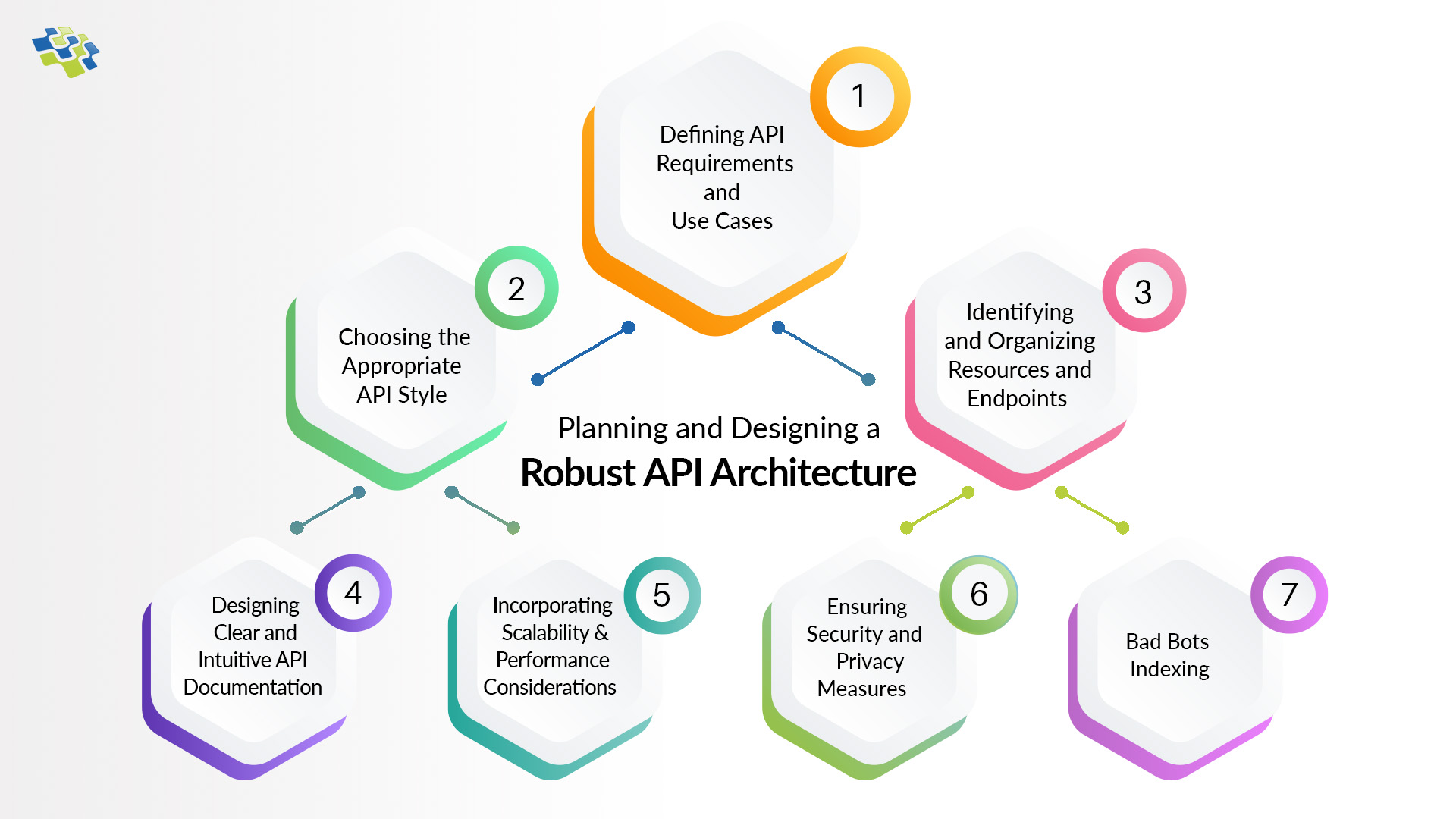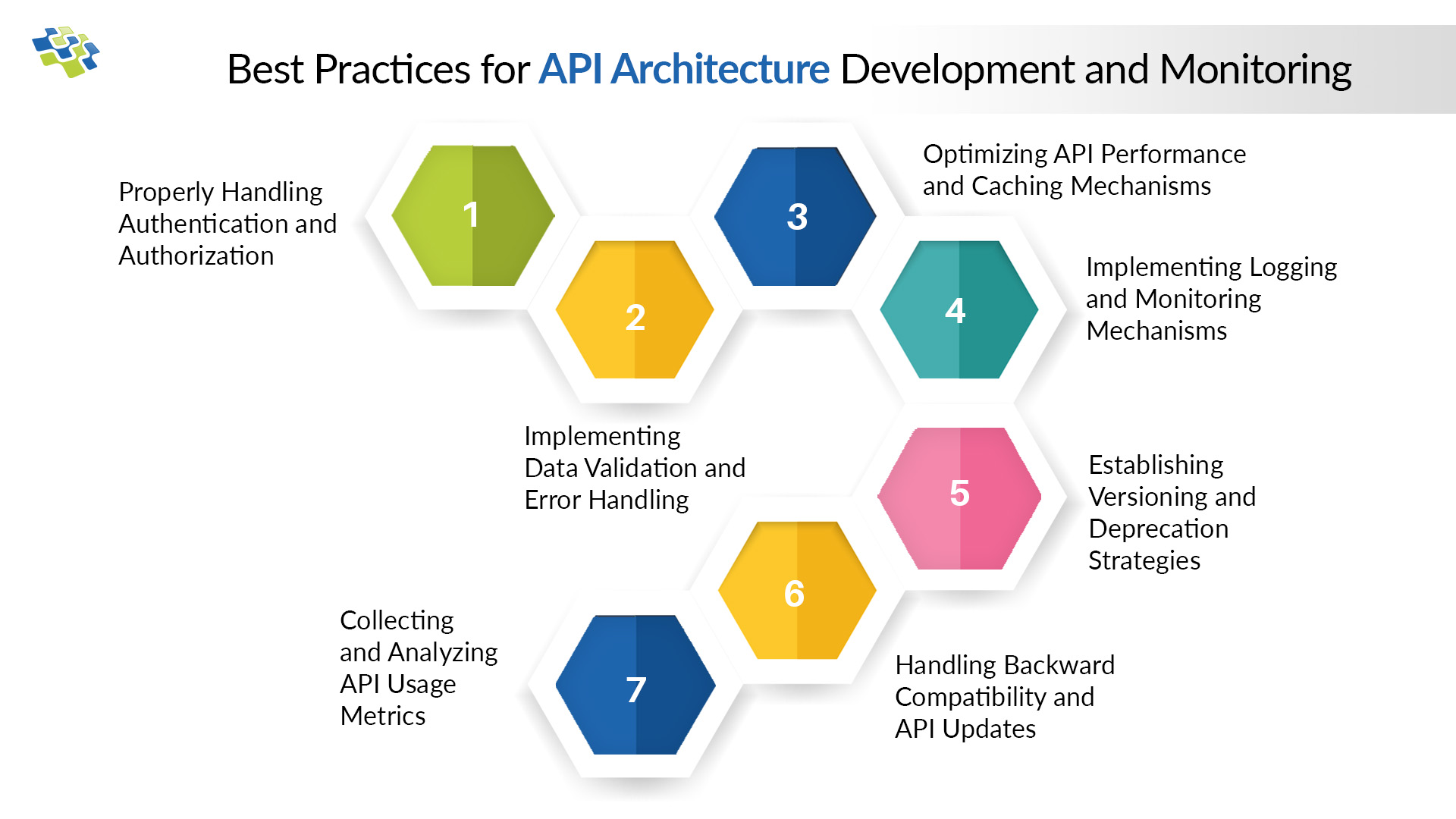How to Build a Robust API Architecture?
The increasing adoption of API architectures can be attributed to the dynamic market and technological landscape. The widespread use of web and mobile applications by consumers and businesses has led to the discovery of valuable insights from previously isolated data sources. Additionally, the growth of APIs is supported by technological trends such as artificial intelligence (AI), the Internet of Things (IoT), and the migration of technology resources to the cloud. In the ever-changing business landscape, innovative companies grapple with establishing efficient architectures and choosing digital channels to maximize profits when developing APIs.

“The API management market is projected to grow at a CAGR of 25.1% during the period from 2022 to 2027. The market is expected to expand from $4.5 billion in 2022 to reach $13.7 billion by 2027.”- GlobeNewswire
The underlying principles of developing a robust architecture that complements their digital business strategy are covered in this article.
What Exactly is API?
An application programming interface (API) is a set of requirements, guidelines, and standards that allow one program to utilize the features or services of another program, platform, or device for improved service delivery. It enables the transmission of data between software products through a set of programming instructions, including the terms and conditions of the data exchange.
Function calls, which are linguistic requests sent to software for specific tasks and services, form the foundation of every API. These function calls consist of phrases with verbs and nouns, and the API description also includes references to these function calls.
APIs serve multiple purposes, including accelerating application development and enhancing the functionality of existing solutions from other providers. Developers leverage APIs to streamline processes and can also create new applications by leveraging third-party suppliers.
Planning & Designing A Robust API Architecture
 1. Defining API Requirements & Use Cases
1. Defining API Requirements & Use Cases
To create a well-designed API, it is essential to grasp its specific needs and goals. This involves understanding the desired functionalities, the type of data it will handle, and the intended audience it aims to serve. By clearly documenting use cases and requirements, you can ensure that the architecture of API effectively fulfils its objectives. Thoroughly comprehending these aspects will enable you to design an API that seamlessly aligns with the desired goals, providing a robust and user-friendly solution for its target audience.
2. Choosing the Appropriate API Style
The selection of an API style plays a pivotal role in defining how clients interact with the API and how data is exchanged. Several factors, including the nature of the data, client requirements, and scalability needs, influence the choice of API style. Popular API styles such as REST, GraphQL, and SOAP offer different approaches to address these considerations. Opting for the right API style ensures that the API architecture seamlessly aligns with the intended use cases, promoting efficient communication and data exchange between clients and the API. By carefully evaluating these factors, you can design an API that caters to the specific needs of clients while providing scalability and flexibility.
3. Identifying & Organizing Resources and Endpoints
Defining the resources and data objects that an API will expose is a critical task. This entails creating a comprehensive data model and establishing clear relationships between various resources. Additionally, organizing endpoints plays a vital role in grouping related operations and establishing a coherent structure for accessing and manipulating these resources. By undertaking this step, it becomes possible to design an API architecture that is well-structured and easily maintainable. Taking the time to carefully map out the resources, their attributes, and the interactions between them ensure that the API is intuitive, efficient, and capable of effectively serving the needs of its users.
4. Designing Clear & Intuitive API Documentation
Comprehensive API documentation is vital for developers integrating with the API. It serves as a valuable resource by providing in-depth information about available endpoints, their functionalities, required parameters, response formats, error-handling mechanisms, and other pertinent details. Well-structured and intuitive documentation enhances the developer experience and streamlines the integration process. By offering clear explanations and examples, developers can easily understand how to interact with the API, reducing confusion and saving time. Thorough documentation enables developers to effectively utilize the API’s capabilities and empowers them to troubleshoot issues independently.
5. Incorporating Scalability & Performance Considerations
Scalability considerations play a pivotal role in achieving this goal. It involves implementing techniques such as horizontal scaling, caching mechanisms, load balancing, and other strategies to effectively manage high traffic volumes. Additionally, performance considerations are essential to optimize response times, minimize latency, and devise efficient data retrieval strategies. By proactively addressing scalability and performance requirements during the initial design phase, the API-architecture can ensure the ability to support future growth without compromising performance. This approach allows for a robust and responsive API that can scale effortlessly as the user base expands, ensuring a smooth and reliable experience for users.
6. Ensuring Security & Privacy Measures
Ensuring security and privacy measures is a crucial aspect when planning and designing a robust APIs architecture. It involves implementing comprehensive security protocols to protect sensitive data and prevent unauthorized access. Measures such as authentication, authorization, and encryption should be incorporated into the design to safeguard data integrity and confidentiality. Additionally, proper access controls and user permissions should be enforced to restrict access to sensitive resources. Regular security audits and testing should be performed to identify and address vulnerabilities. By prioritizing security and privacy, API architects can build a trustworthy and reliable system that instils confidence in users and protects against potential threats or breaches.
7. Bad Bots Indexing
Bad bots indexing refers to the activity of malicious bots or automated scripts that crawl through websites or APIs with harmful intentions. These bots can attempt to scrape sensitive data, exploit vulnerabilities, or disrupt the system’s functionality. To mitigate this risk, API architects should implement mechanisms to detect and block suspicious bot activity. This can be achieved through techniques such as rate limiting, IP blocking, or implementing CAPTCHA challenges to distinguish human users from bots. Regular security audits and testing are essential to identify and address vulnerabilities in the API architecture. This includes conducting penetration testing, vulnerability scanning, and code reviews to proactively identify and address potential security weaknesses.
Best Practices for API Architecture Development & Monitoring
When developing API architecture, it is essential to adhere to the following best practices:
 1. Properly Handling Authentication & Authorization
1. Properly Handling Authentication & Authorization
To ensure secure access to protected resources, APIs should implement robust authentication mechanisms like OAuth or API keys. These methods authenticate users or applications, granting access only to authorized entities. Additionally, role-based access control (RBAC) can be employed to manage permissions effectively, allowing administrators to assign specific roles and privileges to different users. By enforcing strong authentication and implementing RBAC, APIs can maintain strict access control and protect sensitive data from unauthorized access or misuse.
2. Implementing Data Validation & Error Handling
Implementing thorough input data validation within APIs is vital for mitigating security vulnerabilities, preventing data corruption, and avoiding incorrect responses. By validating input data, APIs can ensure that only well-formed and expected data is processed, reducing the risk of potential attacks or system failures. Moreover, comprehensive error handling mechanisms should be implemented to provide informative and user-friendly error messages to API consumers. These clear and meaningful error messages facilitate effective troubleshooting and aid developers in understanding and resolving issues promptly. Together, robust input data validation and comprehensive error handling enhance the reliability, security, and user experience of the API.
3. Optimizing API Performance & Caching Mechanisms
Efficient response delivery is a crucial aspect of API design. By employing techniques like caching static data, implementing pagination, and utilizing appropriate HTTP caching headers, APIs can significantly enhance performance and alleviate server load. Caching static data reduces redundant processing, while pagination helps manage large result sets efficiently. Additionally, appropriate HTTP caching headers allow clients to cache responses, minimizing the need for frequent server requests. By leveraging these techniques, APIs can optimize performance, improve scalability, and provide a smoother experience for API consumers.
4. Implementing Logging & Monitoring Mechanisms
Comprehensive logging of API activities, encompassing requests, responses, and errors, plays a critical role in troubleshooting, identifying security threats, and addressing system issues effectively. By implementing monitoring tools and practices, APIs can track and analyze performance, availability, and security metrics in real time. These monitoring mechanisms enable proactive detection of anomalies, performance bottlenecks, or potential security breaches, allowing prompt remediation actions. By combining thorough logging and proactive monitoring, API providers can ensure a reliable and secure environment, mitigate risks, and continuously optimize the performance and availability of their API services.
5. Establishing Versioning & Deprecation Strategies
Supporting versioning in APIs is crucial for maintaining backward compatibility and facilitating controlled updates. APIs should have a well-defined versioning strategy in place, which includes a clear deprecation plan. This strategy ensures that consumers are informed about upcoming changes well in advance and provided with a transition period to adapt. By effectively managing versioning and deprecation, API providers can minimize disruptions for existing consumers, foster a smooth migration process, and maintain a stable and reliable API ecosystem.
6. Handling Backward Compatibility & API Updates
Designing APIs with a focus on backward compatibility is essential to minimize disruptions for existing consumers. By considering backward compatibility during API architecture design, updates or changes can be introduced without breaking existing functionality. To facilitate a smooth transition, clear documentation and effective communication should be provided to assist consumers in understanding and adapting to the new versions. This proactive approach ensures that consumers can seamlessly upgrade while minimizing the need for significant modifications to their existing integrations, fostering a positive user experience and maintaining the trust and satisfaction of API consumers.
7. Collecting & Analyzing API Usage Metrics
By implementing robust analytics tools, APIs can gather and analyze usage data, unlocking valuable insights into API performance, user behavior, and areas for improvement. These analytics tools enable API providers to track and measure important metrics, such as response times, error rates, and usage patterns. The collected data provides a comprehensive understanding of how the API is being utilized and identifies potential bottlenecks or areas where optimizations are required. Armed with these insights, API providers can make data-driven decisions to enhance performance, identify popular features, and continually refine their API to meet evolving user needs and expectations.
Develop The Best API for Your Business
The benefits of a thoughtfully crafted API architecture cannot be overstated. It empowers businesses to operate with greater flexibility, functioning as a federation of smaller, product-focused teams. This approach enables software developers and IT managers to develop and maintain reliable software with minimal downtime and overhead. An application built around its API not only satisfies functional user needs but also provides a simplified backend for development and service teams.
It offers secure, fine-grained, flexible, and predictable access to resources. Thorough logging and analytics within an API gateway facilitate auditing and streamlined repairs in case of security breaches. Designing a robust API architecture should be a top priority before coding, ensuring scalability, valuable insights, and optimized return on investment.
At NextGen Invent, we believe in delivering excellence through collaboration. Our team will work closely with you to understand your business goals and technical specifications, translating them into a robust API architecture that empowers your applications to perform at their best.
Don’t settle for mediocre APIs that hinder your app’s potential. Contact us today and let’s build something extraordinary together!
Stay In the Know
Get Latest updates and industry insights every month.
 1. Defining API Requirements & Use Cases
1. Defining API Requirements & Use Cases 1. Properly Handling Authentication & Authorization
1. Properly Handling Authentication & Authorization